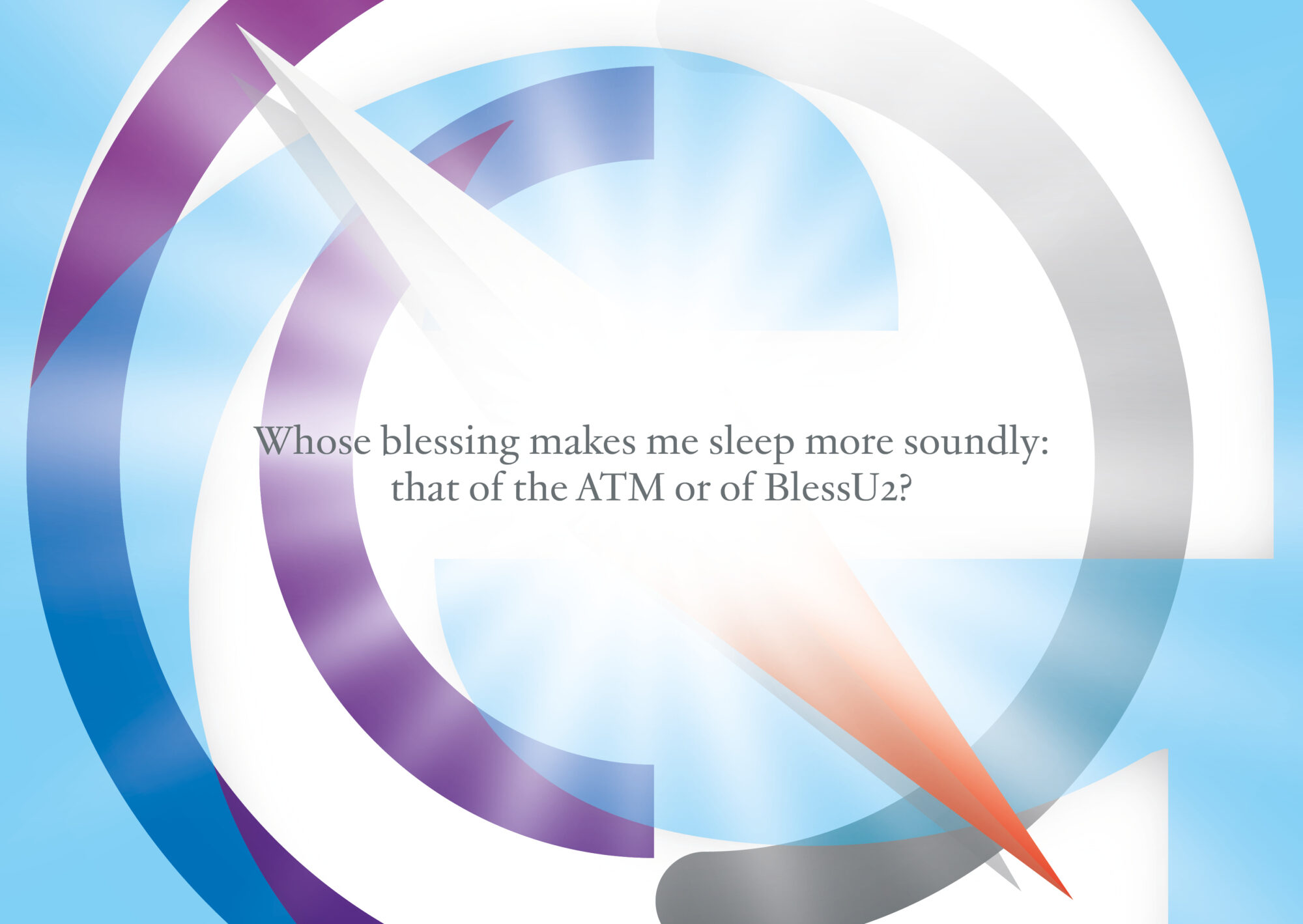Many controversial media reports and a flurry of comments from both believers and non-believers were sparked when the BlessU-2 robot was presented in Wittenberg in 2017 to mark the 500th anniversary of the Reformation. Although it is merely a stylized version of a robot in the form of an exhibition installation, studies have shown that this blessing robot elicits a variety of emotions, and can do so time and again.
Encountering and interacting with this technical artifact very rapidly raised essential questions about the nature of religious communication in the digital era. Is it possible and permitted for a technical device like a robot to deliver a blessing? Which design features are required if a religious meaning is to be attributed to a robot? Could it perhaps offer a blessing practice that also appeals to people who have moved away from the Church, or one that even proves more attractive to them? If digital technology is associated with so many promises and proclamations of salvation, will some subsequent generation of religious robots eventually be constructed as holy and spiritual machines?
Religious robots are a compelling phenomenon and, at the same time, a promising research topic. In recent years, such digital artifacts have been developed, presented, and used in various religious contexts. One example is the Buddhist Mindar, a one-million-dollar automaton designed to resemble Kannon, the Buddhist deity of mercy. So far, Mindar is not AI-controlled; it merely recites the same pre-programmed sermon on the Heart Sutra over and over again.
Remarkably, the development of religious machines and automata can be traced back to sixteenth-century religious practices and worship.
Both religious robots and the research associated with them are situated in the broader context of the relationship between technology and religion, as well as what it means to be human in a culture of digitality. Current theoretical approaches in communication and media theory contend that religious robots are not simply technical media for the digital transmission of certain religious information. Instead, they act as “communicative agents” and can be understood as independent entities with an almost magical impact on religious encounters.
This idea ties in with theologian Paul Tillich’s conviction that “machines” can open up access to magical experiences. He notes that the machine has a life of its own that compels anyone who deals with it to empathize with and listen to it:



BlessU-2, 2017, Protestant Church in Hesse and Nassau © Museum fur Gestaltung Zurich, 2022
In this sense, religious robots seem to promise encounters that can be experienced as dissolving boundaries, directed toward participation in the divine. Admittedly, interactions with robots may not trigger a more profound experience of physical-communal participation. And yet – from a theological perspective – the ambivalent magical dimension and interactions offered by a robot can awaken a longing for something that absolutely does concern us.
Over and above the specific example of a blessing robot as a technical artifact, a focus on phenomena of religious practice in a culture of digitality thus emerges; academic research in this field is as fascinating as it is urgently needed. That urgency is reflected in the University of Zurich’s interdisciplinary research major, launched in 2021, “Digital Religion(s): Communication, Interaction and Transformation in the Digital Society.” Even before the impact of the Covid-19 pandemic, religious convictions were increasingly being articulated in digital form. Such avowals are spreading globally, quite literally unconstrained by borders. Digital participation is altering religious ritual practice, making it more diverse and more of an encounter on an equal footing than ever before. Faith is expressed differently on the internet, more individually, more fluidly, and more freely. Religious authority is no longer determined by specific church officials or religious leaders. And virtual religious practice is apparently possible without the physical presence of a community. That, however, raises very fundamental questions: is a new religious truth emerging on the internet? Does digital religious practice still require a physical community? Does religious resonance evaporate in virtual spaces? Will the future see a digital, planetary religion? At the same time, this also raises a much broader fundamental ethical-theological question: what can religious practice contribute to faith and living a good life in the spaces that make up digital society?


BlessU2 Postcards, © Data-Orbit
Campbell, Heidi A. / Tsuria, Ruth (Eds.): Digital Religion. Understanding Religious Practice in Digital Media, Oxon/New York, 2022.
Beck, Wolfgang / Nord, Ilona / Valentin, Joachim (Hrsg.): Theologie und Digitalität. Ein Kompendium, Leipzig 2021.
Löffler, Diana / Hurtienne, Jörn / Nord, Ilona (2019): Blessing Robot BlessU2: A Discursive Design Study to Understand the Implications of Social Robots in Religious Contexts, in: International Journal of Social Robotics, 1—18.
Luthe, Swantje / Nord, Ilona / Löffler, Diana (2019): Segensroboter «BlessU-2» Forschungsimpulse für die Praktische Theologie angesichts der Entwicklung sozialer Roboter, in: Pastoraltheologie, 108(3), 107-123.
Schlag, Thomas / Nord, Ilona: On the Magical Dimension of Religion. Theological Questions Concerning Robots in Religious Contexts, in: Nørskov, M./Seibt, J./Quick, O. S. (Hg.), Culturally Sustainable Social Robotics. Proceedings of Robophilosophy 2020, Frontiers in Artificial Intelligence and Applications, Band 335, Amsterdam 2020, 606-610.
Tillich, Paul: The Spiritual Situation in Our Technical Society (1954), Edited by J. Mark Thomas, Mercer University Press: Macon 1988.
Prof. Dr. Thomas Schlag, PD Dr. Sabrina Müller,
University Research Priority Program „Digital Religion(s).
Communication, Interaction and Transformation in the Digital Society“, Faculty of Theology, UZH
Prof. Dr. Ilona Nord and Team, Institut für Evangelische Theologie und Religionspädagogik, Julius-Maximilians-Universität Würzburg
Jörn Hurtienne and Team, Human-Computer-Media Institute, Julius-Maximilians-Universität Würzburg